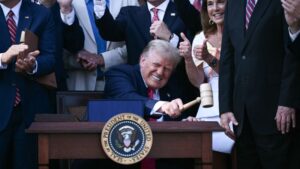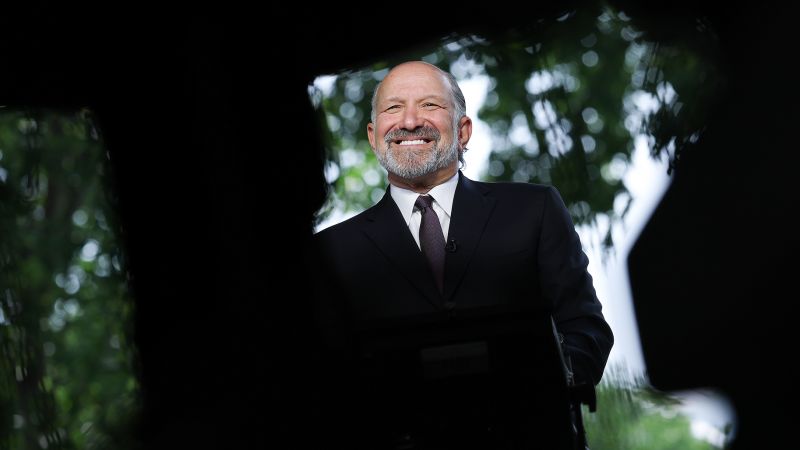Commerce Secretary Howard Lutnick returned to Washington after a significant two-day trip to London, aimed at negotiating a trade framework between the United States and China. During a post-negotiation interview with CNBC, he revealed that President Trump allowed his team to soften their previously aggressive approach towards China in order to facilitate an agreement. The negotiations spanned 25 hours over two days, and Lutnick expressed optimism about the outcome, suggesting that the world’s largest economies had made progress after a tumultuous month of tension.
Lutnick reiterated that the recent escalations had created a situation of “mutual-assured annoyance,” particularly in relation to China’s export restrictions on essential goods like rare-earth magnets. He explained that the Chinese had delayed their commitments, leading the US to enact countermeasures, which fueled the ongoing trade friction. Despite the challenging atmosphere, he noted that the talks were conducted respectfully, devoid of any hostility, leading both parties to view the agreement as mutually beneficial.
A significant point in the negotiations involved rare-earth magnets—crucial for various high-tech applications, including electronics and automotive technologies. Lutnick insisted that the US needed to assertively protect its economic interests, reminding the Chinese that “America’s too great, too strong.” The Trump administration had several options for retaliation should negotiations stall, such as subpoenaing Chinese banks and restricting ethane exports. With ethane being pivotal for plastic production, Lutnick emphasized that lacking access to it could deeply impair China’s economy.
Instead of following a path of aggression, President Trump chose a more constructive approach, creating a conducive environment for negotiating a deal that benefited both the US and China. Lutnick highlighted that China has agreed to streamline the licensing process for US companies seeking to obtain rare-earth magnets. In exchange, the US would ease some export restrictions while still withholding key advanced technologies that could pose security risks.
The opulent surroundings of Lancaster House, where the negotiations took place, seemed to provide a sense of comfort for Lutnick and his team, stating that “every inch of it was gold-leafed,” embodying the ideal backdrop for a trade agreement reflective of Trump’s negotiation style. Despite the progress made, Lutnick warned that the US would maintain substantial tariffs and export controls against China, indicating that both countries still hold various “cards” in their ongoing trade relationship.
Looking ahead, the Trump administration intends to concentrate on finalizing further trade agreements now that a framework with China is in place, with potential deals expected in the upcoming weeks. Lutnick remarked that the administration was engaged in active negotiations with multiple trading partners and that they are well-positioned to move forward after the intensive discussions with China.
He emphasized the administration’s commitment to ensuring that any deals struck are advantageous for American stakeholders. The focus remains on opening foreign markets and addressing tariff and non-tariff barriers that limit American businesses’ global competitiveness. Lutnick articulated a clear goal of reducing the substantial $1.2 trillion trade deficit and assured that the administration is prepared to take the necessary time to secure the best possible agreements.
The sentiment shared by Lutnick reflects a broader commitment from the Trump administration to achieve favorable trade practices that bolster the US economy. He highlighted the positive outlook for American farmers, ranchers, and manufacturers, stating that these sectors would reap significant benefits from an open trading environment. Additionally, he praised Boeing’s track record in benefiting from trade agreements, reinforcing the belief that the US economy is robust and ready to thrive through international trade.
In summary, the negotiations with China mark a pivotal moment in international trade relations, as the United States asserts its economic strength while fostering agreements that can lead to mutual benefits. The administration’s approach emphasizes careful negotiations, prioritizing long-term interests over short-term gains, ultimately striving for a balanced and advantageous trade landscape.











